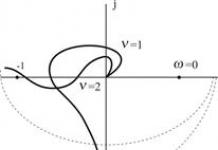In this article we will talk about the experience of laying laminate flooring on a wooden floor in a panel house. We will talk about budget repairs that everyone can afford.
This is what the floor looked like before the renovation...
The first problem that every resident of a panel house has encountered is the creaking of wooden floors. Here's why this happens: the floorboards are nailed to the joists, which have become loose over time, causing the floor to creak.
The next problem is a very uneven floor with large differences between the boards. To lay laminate flooring, such a floor must be leveled, and the maximum permissible height differences should not exceed 2 mm per 1.5 m.
To eliminate these problems, we decided to level the wooden floor using plywood. But if you just screw plywood on top of the creaking boards, then, of course, it won’t get any better. Therefore, you first need to strengthen the floor with screws.
We dismantle the old baseboard. If it is plastic, there will be no problems, but a wooden baseboard needs to be torn off with a pry bar or a nail puller. We pull out all the protruding nails and remove large protrusions with a plane. Before laying plywood, do not forget to thoroughly wash and vacuum the floor.
 Preparing a wooden floor for renovation
Preparing a wooden floor for renovation Now it is important to determine at what height the wooden floor is raised above the slab; for this, 1-2 holes are drilled in the boards. You need to know the distance between the base and the boards to determine the size of the screws for the floor. Usually it is 8-10 cm, but on the first floor there are even 25 cm.
After raising the floor level, the door may not open: the thickness of the laminate with the backing is almost 1 cm + the thickness of the plywood (minimum 0.6 cm). If the door is old, then you can cut it without any problems with a hacksaw, simply by removing it from its hinges. And to trim a door with a laminated coating, be sure to place thick plywood underneath, otherwise chips will appear at the cut site.
Material calculation

Next you need to calculate how many screws you will need. To do this, we look at how many joists there are in the room (they can be found by nails or seen in a crack near the wall). Then we count the number of boards in width and multiply the resulting amount by the number of joists.
Each board is screwed with 1 screw to the joist, every 40-60 cm. For example, if there are 11 joists and 28 boards in the room, then you will need 308 screws + 10-20% for reserve.
It is better to screw the plywood every 15 cm; if less often, it will swell and dangle when walking. The length and width of the room are measured and the resulting amount is divided by 15 cm, and then the values are multiplied. For example, our room measures 3x5.6 m. Divide 3 meters by 0.15 = 20 pieces, divide 5.6 m by 0.15 = 38 pieces. Now we multiply 20 by 38 and get 760 pieces, + 10-20% for stock. For plywood, wood screws 25-30 mm thick and 3-3.5 mm thick are suitable.
Now we calculate how much laminate will be needed. To do this, you need to find out the dimensions of the room, and do the calculations in the store, because laminate panels have different parameters. Our room is 17 square meters. m. In one box there is a laminate with an area of approximately 2.6 square meters. m. Divide 17 by 2.6 = 6.53. We round up, which means we will need 7 boxes, and half the box will be in stock in case of defects.
This should be enough if you lay the laminate in the usual way: trimming costs are approximately 5%. If laying diagonally, the margin should be at least 10%.
When purchasing laminate, it is important that the delivery lot on all boxes is the same. In boxes with different batches, the shade of the design may differ. Also, the pack must be intact, otherwise the locks may be damaged.
Now we count the amount of plywood. We chose plywood with dimensions of 1.43x1.52 m, that is, the area of 1 sheet will be 2.17 square meters. m. We divide the area of the room (17 sq. m.) by the area of plywood and get 7.8 sheets. This means you need to buy 8 sheets of plywood. The thickness of the plywood must be at least 12 mm.
Strengthening boards with screws
So, all the materials have been purchased, let's start strengthening the floor with screws. There is an article on the site about what to do with a creaking floor in an apartment; it partially talks about this work.
Since the screws were difficult to insert into the wood, we first drilled holes about 70% of the length of the screw, and then used screws to tighten the boards to the joists.
 We strengthen the floor in rows along the joists
We strengthen the floor in rows along the joists Of course, if you have a powerful screwdriver, you will be able to do this much faster without additional drilling. In our case, the cheapest Chinese screwdriver, which quickly sat down, so the whole job lasted for several days.
The main thing is to screw the boards tightly to the joists so that they do not dangle when walking.
Since the doors will soon be replaced, we cut down the slopes to install the plinth.

During work, it turned out that there was too much blowing from under the floor on the street side, so we had to seal the gap with foam. In this case, you need to moisten the surface before treating with water, and also spray the foam after application, since the polymerization process of the polyurethane foam requires moisture.
 There was a strong blow from the street from this gap
There was a strong blow from the street from this gap  It got so much better
It got so much better Leveling with plywood
 To level the floor with plywood, place the sheet on the floor and screw it every 15 cm with screws. Don't forget to leave a small gap between the sheets and near the wall. The even position of the plywood sheets is controlled using a level. Sheets that require trimming are cut with a hacksaw or jigsaw.
To level the floor with plywood, place the sheet on the floor and screw it every 15 cm with screws. Don't forget to leave a small gap between the sheets and near the wall. The even position of the plywood sheets is controlled using a level. Sheets that require trimming are cut with a hacksaw or jigsaw.
Laying the substrate
 The cat was scared...
The cat was scared... We chose the cheapest substrate, made of polypropylene. Before laying, vacuum the floor again.
We lay the backing with a reserve on the walls so that we can cut off the excess later, and glue it together with tape. The substrate should lie in one layer, joint to joint.
Laying laminate
Having finished preparing the floor, we begin laying the laminate flooring. Before this, you need to store the laminate indoors for several days (to adapt the material to the temperature and humidity of the apartment).
Laying begins from the corner of the room, preferably from the most visible place. However, there is a small nuance here: if the door opens into the room and no one plans to remove it, then they begin to lay the laminate from there, otherwise it will not be possible to lay the last row.
 We start laying from the door
We start laying from the door It is best to place wide laminate joints along the light from the window, so the gaps will be less visible (over time they will increase).
Modern laminate is installed without glue, using the locking method. This type of flooring installation is called floating because it is not rigidly fixed to the floor, but lies freely on the underlay. During the change of season, the coating changes size slightly, so you cannot firmly screw the laminate to the floor. There are locks along the perimeter of the panel that connect if you insert one of the panels at an angle and then lower it.
To see how it works, watch the video tutorial:
Place the panel in the corner and join the next one on the short side. This is how we assemble the first row. The last panel will most likely have to be filed down. This can be done with a jigsaw or saw, but make sure the teeth are small, otherwise there will be chips on the laminated surface.
 The first row is ready
The first row is ready The main rule when laying laminate flooring is to leave a gap of about 1 cm near walls, pipes, doors and other obstacles. However, you should not make a gap of more than 2 cm, because the thickness of the plinth will not be able to cover it.
 A wedge is needed to support the same gap near the wall
A wedge is needed to support the same gap near the wall For ease of installation, stores sell a special kit for laying laminate flooring. It includes wedges of the same thickness, a mounting foot for installing the last row and a wedge of panels.
To additionally seal the seams, you can buy a special sealant paste and coat the locks with it before joining. However, in wet rooms it is better to use tiles or porcelain stoneware.
The second row is laid in the same way as the first, and then inserted into the previous one. To simplify the task, we recommend laying the panels as close to the lock as possible, so that you can then simply lift the entire row and click it into place. This is done by simply pressing the row at an angle.
 To connect, insert the panels at an angle
To connect, insert the panels at an angle  Then we lower the panel so that the second row lies next to the first
Then we lower the panel so that the second row lies next to the first  We join adjacent rows with our hands
We join adjacent rows with our hands  As a result, the joint should not be visible
As a result, the joint should not be visible Some types of locks allow you to join the laminate not as a whole next to the previous one, but one piece at a time. For example, Quick Step laminate has universal locks: they can be inserted horizontally or at an angle. At the same time, there are Click locks that only hammer horizontally.
It is not necessary to immediately leave a gap between the first row and the wall. It will be more convenient to collect 3-4 rows, and then move them to the wall, and you can put something heavy on top. This is much easier, especially if the wall is not very smooth.
Another important feature is that the panels are laid in a checkerboard pattern. If the first row started with a whole laminate panel, then the second should start with half, and the third again with a full panel. This way the connections of the locks will be tighter, and the cost of cutting will be minimal.
Half the room is already readyThus, we lay the remaining rows of the laminate in a checkerboard pattern. When we reach the heating pipe, cut a round hole with a jigsaw or drill. Then we simply lay the scrap and press it with a plinth or glue it to liquid nails.
When we reach the last row, we need to file each panel to the width, taking into account the gap. Installation occurs in exactly the same way; press firmly on the panel at an angle.
 The floor is almost ready
The floor is almost ready Installation of skirting boards
The plastic plinth with cable duct consists of two parts. The first is a wall mount, and the second is a decorative attachment that snaps on top. There is another type of fastening - first, metal brackets are attached, and then a plinth is put on them.
We drill holes for dowels approximately every 30 cm and fasten one part of the plinth. We fasten the main part, hide the wires, then put on the decorative attachment. For a beautiful connection, we use special components for the plinth: adapters, external and internal corners, plugs.
We put a special lining around the pipe to hide the gap (it costs about 50 rubles). In our case, the pipe was very close to the wall, so we had to trim the baseboard and saw off the lining, and then glue it with liquid nails.
Buy the plinth and all components together with the laminate. Otherwise, if there is a shortage of material, you will have to visit many stores before you can find the right color.
And the final touch is to attach the threshold to the door. It is needed to hide the height difference between rooms. The rules for laying laminate flooring require separating different rooms with a gap so that the coverings are independent. However, in practice, if the same covering is chosen for adjacent rooms, you can not use the threshold, but do everything without seams: it will be prettier and easier to clean. If some kind of defect later appears, it is more convenient to actually saw off the coverings in the doorway.
Floor repair cost
- Birch plywood 6 mm thick, 8 sheets – 2300 rub.
- Laminate Kronostar White Pear 31 class – 7 boxes. 1 sq. m. cost 235 rubles in Leroy Merlin. Total 4112 rub.
- Backing for polypropylene laminate – 1 roll, 2 mm thick, 25 m long – 320 RUR.
- Screws and dowels - about 600 rubles.
- Plastic plinth with cable channel 8 pieces, 2.5 m each - 150 rub.
- Piping around the pipe, connectors and corners for the plinth - 420 rubles.
- Threshold – 160 rub.
As a result, the amount is: 9112 rubles.
 The cat clearly didn't like the new slippery floor
The cat clearly didn't like the new slippery floor - It is better to take thicker plywood; 6 mm is still not enough, so you should not skimp on this. Next time we would take plywood of at least 12 mm. If the floor is too uneven, then you need to lay plywood in 2 layers, with the joints offset.
- We advise you to choose screws that are not too thick or long, as they will be difficult to screw in.
- You cannot buy a soft substrate thicker than 3 mm; it will spring strongly when walking, and the floor will be pressed under you. To find out more detailed information, we recommend reading our article about.
- If the laminate is laid on a concrete floor, then before laying the backing you need to lay a layer of polyethylene for waterproofing.
- For productive work you will need a good screwdriver with a powerful battery. This way you will save a lot of time.
By spending a small amount of money on repairing the old wooden floor, we got rid of the squeak and made it smooth and pleasant to walk on. It took three days to prepare the floor for the laminate, and one day was spent on the installation itself.
Laminate is a coating that requires the preparation of a perfectly flat base. But what if it is not possible to dismantle the old floor and install a new cement screed? Is it possible to lay laminate flooring on a wooden floor? These questions are of interest to those who have decided to refresh the interior without resorting to capital investments. You can learn about methods of laying material on an existing surface from the recommendations and video given in the article: how to lay laminate flooring on a wooden floor with your own hands.

Is it possible to lay laminate flooring on a wooden floor?
The question of the possibility of laying laminate flooring on an old wooden floor often arises due to the fact that the cost of dismantling and installing a new cement base largely exceeds the cost of purchasing the floor covering itself. In addition, the feasibility of carrying out a major overhaul is not always justified, since it is associated with the duration of the process, while the interior of the room can be changed by resorting to cosmetic repairs.

Is it possible to lay laminate flooring on a wooden floor and not be afraid that the coating will deform, creak when walking, or come apart at the seams? Knowing how an old wooden base behaves and what measures need to be taken to comply with the basic requirements for laying laminated floors, you can safely begin the work. The technology for laying laminate panels on a wooden floor is similar to the procedure for installing a covering on a screed.
Despite the warnings of manufacturers and some laying specialists, it is possible to lay laminate flooring over a wooden floor, taking into account two main differences between a wooden and a cement base:

In order for the laminate to be perfectly smooth, not come apart in locks and serve for a long time, it is necessary to prepare the base taking into account all the requirements for the surface when laying this material. The base should be:
- flat - deviation from the horizon should not exceed 2 mm per 1 linear meter of surface;
- absolutely dry;
- clean - it is necessary to remove from the surface all debris and dust that arose during the preparation process;
- stable - there should be no displacement of the base elements relative to each other.
How to level a wooden floor under laminate
There are several options for leveling wooden floors under laminate:
- scraping a wooden floor;
- covering the floor with plywood or chipboard;
- leveling with plywood using pads and bars.

The choice of one or another surface correction option depends on the degree of unevenness of the wooden base.
Repairing an old wooden base
Work on preparing a wooden floor for laying laminated flooring is carried out either immediately before installation, or in advance. It depends on how complex the process will be and how long it will take to fully meet the technical requirements. First you should check the condition of the wooden floor for any possible defects.
Most often, boards that have been in use for more than one year have a slightly convex surface as a result of applying several layers of paint to them. The edges of the boards or parquet slats may be damaged in the form of cracks, holes and gouges. In addition, it is possible that the floorboards do not adhere tightly to the joists at the joining points. Sometimes there is a significant slope of the floor in one or more directions. All these shortcomings require elimination.

Before laying laminate flooring on a wooden floor, you should fill all the potholes, wedge and secure the loose elements with glue and screws. If there are cracks in the wood, they are stapled together using a construction stapler. Moldy and rotten boards must be replaced with new ones. To eliminate the creaking of a wooden floor, you need to go through all the floorboards.
You can also get rid of squeaks in wooden flooring by driving wedges between poorly fixed boards and joists, as well as between adjacent floorboards. This method will help neutralize the friction of the boards against each other. If the plank flooring is very worn, this method may not be effective. However, the main threat to the integrity of the laminate remains the unevenness of the base.

How to lay laminate flooring on an uneven wooden floor: surface treatment by scraping
If all the floorboards of the wooden base are well secured and the surface does not have a significant slope, you can use a scraper or power planer for leveling. This method is appropriate for surfaces whose unevenness does not exceed a slope of 5-6 mm per square meter. Local irregularities are eliminated by sanding the defective areas with sandpaper or using a hand scraper. This treatment is also used in hard-to-reach places.
To facilitate the process, it is recommended to begin leveling by dividing the entire surface into several sections. After processing, the plane of each section and the quality of grinding are controlled. Before starting work, it is necessary to deepen the heads of all self-tapping screws 2 mm into the wood in order to avoid contact with the metal knives of the power grinding tool, which can lead to their damage.
Upon completion of leveling, check the entire surface of the wooden floor using a level, then carefully sweep or vacuum away sawdust and dust. If the small debris remaining after leveling is not removed, there is a possibility that it will get into the locks of the laminated covering, and this, in turn, will lead to unwanted squeaking when moving on the laid laminate.

Before laying the laminate on a wooden floor after leveling, it is necessary to treat the entire surface with an antiseptic compound or dry it and dry thoroughly. To reduce possible deflection of the laminated coating, it is recommended to lay panels of material perpendicular to the direction of the boards.
Leveling the floor with plywood under laminate
One of the simplest and at the same time low-cost methods of adjusting the surface to the required level is the method of laying plywood on a wooden floor under a laminate. To perform such work, you should purchase plywood sheets with a thickness exceeding the thickness of the finished laminated coating. It is recommended to choose the thickness of plywood for laminate flooring in the range from 12 to 15 mm.
Before starting installation, it is a good idea to check the humidity level in the room. This can be done by placing a sheet of polyethylene on the floor measuring approximately 1x1 m. The polyethylene should be pressed tightly to the floor and left for three days. If after this time no condensation forms on the inside of the sheet, plywood sheets can be used in such a room.

The process begins by cutting plywood sheets. They are cut into squares measuring 60x60 cm. Individual outer sheets are adjusted to the contours of the room, fill niches and go around protruding areas. When laying, gaps of 7-10 mm are left between the sheets, acting as expansion joints. The distance between the outer sheets and the wall should be between 15 and 20 mm. In order not to mix up the cut plywood sheets during assembly, it is recommended to number them.
You can attach plywood boards to the floor using glue, but you can do without it. Using the laying diagram and numbering, the sheets are laid out on the wooden floor in their place and fixed with self-tapping screws in the corners of the square and along diagonal lines in increments of 15 cm. For fastening, it is important to use self-tapping screws, the length of which is three times the thickness of the plywood. After final assembly, the plywood sheets are carefully sanded with coarse sandpaper.
Laying plywood under laminate on a wooden floor with fastening to joists
Before laying laminate flooring on a wooden floor, you can use the surface leveling method of laying plywood and attaching it to joists. This method is quite labor-intensive and expensive. The principle of this method is to install the logs in such a way that their upper edges are in the same horizontal plane. To achieve this position, wedges or blocks of wood are placed under the joists. When laying adjustable joists, their position is fixed using adjusting screws.

Plywood boards are cut using a circular saw and laid on joists, while the horizontal level of the plane of each sheet is checked. Laying is done in a checkerboard pattern to avoid combining the seams at one point. The sheets are fastened to a wooden base using self-tapping screws along the perimeter and diagonally in increments of 20 cm. For quick and convenient installation, it is recommended to pre-mark the fastening locations.
After complete installation, the sheets are sanded and treated with an antiseptic solution, and then the laminate is laid on the plywood. On wooden floors leveled in this way, the floor covering will remain durable and long lasting. The only drawback of laying plywood on joists is that this option is not very suitable for rooms with low ceilings, since their height can be reduced to 8-10 cm. In addition, trimming the door leaf may be required.

Is it possible to lay laminate flooring on fiberboard?
When renovating an apartment, many people wonder whether it is possible to put laminate flooring on a wooden floor covered with fiberboards? Some recommendations note that if the fiberboard boards are laid flat and held tightly, they can be used as a base for a laminated coating. However, some experts do not agree with this statement.
The thing is that wood fiber panels do not have the ability to redistribute the load over a large area, unlike plywood or chipboard sheets. In addition, when fiberboard sheets are laid, there is no way to carefully examine the condition of the old wooden floor. How to lay laminate on a base whose elements may be rotten or worn out? This can lead to the fact that over time, all existing defects will appear on the finished floor covering.
The use of fiberboard, which is based on pressed paper, as a base for a laminated coating raises serious doubts about the durability of the repair. On old floors, under load, a play of up to 0.5 mm may appear, which will cause the laminate locks to become loose. This can lead to squeaking and broken locks. And if you consider that wooden floor joists can be cracked, the gap can be significantly larger.

Considering that not everyone has the opportunity to dismantle an old wooden floor or rebuild it (which is also expensive in itself), you can lay laminate flooring on fiberboard. However, the condition must be met that the fiberboards are sufficiently firmly fixed to the wooden floor. And if the base for the laminate is strong, then there is not much difference whether the base is chipboard, plywood or fiberboard.
Laying laminate flooring on a wooden floor with your own hands
To understand how to properly install laminate flooring on a wooden floor, you need to have an understanding of the material itself, its classes, types of substrate used, calculations and installation technologies. This information will help when carrying out work to avoid mistakes that lead to damage, waste of material, and will also contribute to high-quality and durable installation.

Selecting material: calculation and purchase of laminate
The amount of laminate required is calculated based on the area of the room, the material consumption rate and the installation method. First of all, you should determine the surface area to be covered. The number of square meters of the room is divided by the area of one laminate board. As a result, the required number of coating strips is obtained. Knowing that each pack contains 8 boards, you can easily determine the number of packs.
When purchasing material, you should also take into account the consumption coefficient, which varies from 5 to 14%. This or that coefficient value depends on how the laminate panels are laid. If you decide to lay the laminated flooring diagonally, the maximum coefficient is taken. Consequently, there will be more material waste.
In addition, it should be taken into account that during installation work, the plate lock may be accidentally damaged or incorrect trimming may be performed. In this case, it would be useful to purchase several boards in reserve.

To work with laminate in residential premises, choose a coating with certain technical parameters. Manufacturers present four classes of material, the main indicator of which is wear resistance. The most common slabs are 6, 8 and 10 mm thick. The thicker the board, the stronger the coating. For household use, grades 31 and 32 of material are quite suitable.
In addition to strength indicators, laminate slabs are distinguished by locks. There are two types of locks – CLICK and LOCK. The CLICK lock is more common; it holds the seam perfectly and allows unevenness of up to 3 mm per linear meter of surface. Panels with the second type of lock are difficult to install, require a perfectly level base and are used less frequently.
Preliminary preparation of the base
Before laying laminate flooring on a wooden floor, you should analyze the condition of the existing subfloor. It is necessary to identify all existing defects: potholes, cracks, holes. Loose boards should be wedged and secured with glue and screws. Potholes should be filled with wedges using glue, and if possible, the ventilation holes should be cleaned.

A completely old floor should be dismantled down to the supporting joists. If the inspection reveals that some elements are rotten, they should be replaced. Flooring boards that are leaky on one side can be turned over with the unworn side up, and completely rotten ones can be replaced with new ones. Checking the slope of the floor is carried out using a building level and a lath.
If a difference in the floor surface of more than 3 mm is detected, the scraping method should be used. If you don't have a sanding machine, you can always rent one. It will be more reliable to level the floor by laying chipboard or plywood. In addition to the leveling function, such a coating will provide additional insulation and sound insulation of the floor.
Leveling a wooden floor with chipboards
Laying chipboard slabs is done after strengthening all elements of the wooden floor and impregnating the base with an antifungal compound. The baseboard is dismantled and unnecessary objects that could interfere with the process are removed. The slabs are laid from the corner of the room. A gap of about 10 mm is left from the wall. Place the chipboard sheets so that the joints of the material fall on the lines of the beams.
Chipboard slabs are secured with self-tapping screws, and care must be taken to ensure that the heads of the fasteners do not extend beyond the surface. The pitch of the screws should be about 30 cm. After laying all the chipboard panels, the joining lines must be putty with thin-layer compounds specially designed for working with wood. When the solution dries, the surface of the chipboard boards is sanded.

The base of freshly laid chipboard should be thoroughly dried. Ideally, the slabs should be left for about a week to allow acclimatization and excess moisture to evaporate. If during this time it turns out that some joints have swelled or shifted, they should be sanded, puttyed and cleaned with sandpaper.
Necessary tools for work
For people who do not do professional repairs, but are planning to lay laminate flooring themselves, a logical question arises about a set of tools for the job. To lay laminate flooring on a wooden floor, you will need a tool that should be in the arsenal of every owner:
- construction tape;
- ruler, pencil;
- construction knife;
- hacksaw or jigsaw;
- rubber mallet;
- pliers.

Do not forget about the plinth, for fastening it you will have to slightly expand the range of tools. If you intend to install wooden baseboards, you will need a miter box. In the case of plastic skirting boards, this device will not be needed. You will also need a screwdriver or drill to tighten the screws.
A hammer drill can also be useful for making holes for mounting baseboards. Not everyone has this power tool, but it can be rented for the duration of the work.
Choosing a laminate underlay for a wooden floor
Before laying laminate flooring on a wooden floor, it is correct to cover the surface with underlay. This layer allows you to compensate for minor unevenness, provide moisture and sound insulation of the laminate, as well as the space between the coating and the base. There are quite a lot of types of substrates, and they differ in composition, properties, cost, appearance and other characteristics.

The material for making substrates can be synthetic (polyethylene foam), natural (cellulose, cork, pine needles, etc.) or combined. The most budget option is foamed polyethylene - lightweight, easy to install, but fragile material that quickly compresses and does not provide proper moisture exchange. A more durable substrate is made of polystyrene in the form of 1x1 m slabs; it does not cake and provides high-quality sound insulation. But these types of substrates are more often used when the base is made of concrete.
Before laying laminate flooring on a wooden floor, it is recommended to arrange an underlay layer of natural material. The cork substrate has excellent properties; in combination with laminate, it demonstrates excellent heat and sound insulation. Its cost is quite high, but this is compensated by the long-term preservation of the wooden base. The thickness of the substrate is selected based on the same parameter of the laminate board.
For example, a 3 mm thick substrate is selected for an 8 mm board. As for laying the material, it should be noted that the strips of the substrate are placed end-to-end without overlaps and permanently attached to walls or a wooden base. The connecting lines are taped along the entire length or in periodic places.

How to lay laminate flooring on a wooden floor: installation technology
Once all the preparatory work has been completed, you can proceed directly to laying the laminated panels. The process of laying laminate flooring is relatively simple and does not require special knowledge and skills. However, it is still worth familiarizing yourself with some installation nuances. Choose a place where the laminate packages will be located, remove the doors from their hinges, and clear the room of unnecessary items.
Before laying the substrate, it is necessary to remove all debris and thoroughly remove dust from the surface of the base. The backing strips are laid parallel to the future location of the laminate boards. If a single piece of backing is not enough, you need to connect several parts with tape, cutting them using the mirror cut method. All connecting lines are also taped.
Next, lay the first row of covering. Do not forget that the laminate panels should be located across the wooden base boards. Carefully connect the slats of the first row to each other. First, we assemble solid panels, and then we measure the length of the last board of the row and mark the cut line. When trimming, you must turn the board 180 degrees, otherwise the locks will not match. At the mark, cut off the excess part. As a visual aid, use the video: how to lay laminate flooring on a wooden floor with your own hands.
Don’t forget to leave gaps between the end of the panel and the wall, into which you can place 8-10 mm wide stops made from laminate scraps. After the starting strip is formed, the next one is assembled. The distance between adjacent rows should be small to make it easier to connect them. The formation of the next row begins with the cut lamella.

After assembling the second strip, it must be carefully lifted, holding the end joints, and turned slightly so that the lock snaps into place. You need to go along the entire length of the strip, alternately lifting the end joints and snapping the locks. In order for the locks to fasten tightly, it is necessary to tighten them by tapping them with the palm of your hand or a mallet.
All other rows of coverage are assembled using this principle. It is best to lay laminate panels in a chaotic order, i.e. Some of the rows should not be started from the cut board of the previous strip, but from the whole board or from a shortened piece.
Features of laying the last row of laminate
The closer the installation moves to the last row, the more inconvenient it will be. When the room is 80% covered, you need to lay the panels, turning in the opposite direction and standing on the already laid laminate. Some difficulties are caused by laying the last row, which must be carefully measured and cut along the strip.

When the laying process reaches the last strip, the distance from the edge of the penultimate row to the line of the opposite wall along the entire length may not be the same. In view of this, marking the last row is done in stages: first, the first board is marked and cut, then the next one is measured and cut, and so on until the end of the row. We outline the outlines of the first panel with a pencil and cut out the required strip according to the markings.
As soon as the laminated coating is laid, begin attaching the baseboards. The connecting points between rooms are covered with special thresholds to prevent dust from entering there. At the end of the work, remove sawdust and debris from the coating and wipe the surface with a slightly damp cloth.
How to properly lay laminate flooring on a wooden floor in hard-to-reach places
Laying laminate flooring in places where pipes pass, heating radiators, around doorways and in other hard-to-reach places does not present any particular difficulties. Bypassing the pipes is done in the following way: make marks on the board with a pencil and cut out the corresponding holes in it, not forgetting to take into account the temperature gap between the coating and the pipe (8-10 mm).

Gaps around pipes and other iron elements should be treated with a matching acrylic sealant, while expansion joints near walls should be left unfilled. Subsequently, their unaesthetic appearance will be covered with baseboards. The material is laid in a similar way near thresholds, steps and other protrusions.
As for going around doorways, before laying laminate flooring on a wooden floor, it would be correct to remove the panel from its hinges and determine whether the door will close after laying the coating. To do this, you need to sum up the thickness of the laminate, the substrate and the leveling layer (if there is one). Subtract the resulting value from the distance from the edge of the door to the wooden floor. If less than 3 mm remains, the door leaf will need to be trimmed.
After all the calculations, lay the laminate around the door frame, leaving an allowance of 8-10 mm, return the door to its place and check its movement. If necessary, file the door to the required size.

Training video: how to lay laminate flooring on a wooden floor with your own hands
According to the principle that it is better to see once than to hear a hundred times, home craftsmen are invited to familiarize themselves with the instructional video of laying laminate flooring on a wooden floor. From the videos you can learn everything related to the installation of coating on a wooden surface.
Video: DIY laying laminate flooring on a wooden floor
On the Internet you can find a whole series of courses on how to lay laminate flooring. Video instructions for installing floor coverings contain visual information and practical advice from both experienced craftsmen and those who have tried to level a wooden base and lay laminate flooring on their own for the first time.
In the training videos you can see master classes on leveling the floor with plywood and chipboard, learn about the features of a wooden base, choosing a substrate, as well as step-by-step instructions for laying laminate flooring. In addition, in the video materials you can find recommendations for eliminating possible defects in wood flooring.
Video: how to lay laminate flooring near a doorway
There are many educational videos about the installation of skirting boards, the features of interlocking floor coverings and the technology of fastening panels of material to each other. Thematic video tutorials contain information on how to lay coating around radiator pipes, in niches, ledges, near doors and steps, as well as in other hard-to-reach and inconvenient places.
Some video tutorials are devoted to eliminating and repairing defects on already laid laminated flooring. From them you can learn how to disguise scratches and dents formed on the laminate from fallen heavy objects or heels, as well as how to eliminate damage caused during the installation process: chipped corners and edges, seam divergences, swelling of the coating.
Leveling a wooden floor using any of the existing methods allows you to use it as a base for laminate flooring. If all work on preparing the floor surface is carried out in compliance with technical requirements, the floor covering will last a fairly long time, without requiring repairs and while maintaining an aesthetic appearance.
Laminate is one of the most popular floor coverings today. It is used in both residential and commercial establishments. Laying laminate flooring on a wooden floor is done when it is necessary to hide the defects of the old plank covering, as well as when you want to simply update the interior.
According to experts, it is better to completely dismantle the old wooden floor, after which, to level the rough base, apply a concrete screed under the laminate. But since this process will require additional costs that may exceed the cost of the laminate, it is possible to lay the product directly on a wooden base, as well as using plywood or OSB as a substrate. Let's look at the first and second methods of installing laminate flooring on a wooden floor with all the details.
Tools and materials for working with flooring
1. Drill, jigsaw and screwdriver. Power tools allow you to increase the speed of installation, facilitating manual labor. 2. Hammer and mallet. Laying laminate flooring on a wooden floor simply cannot be done without them: hammer in nails, knock down the laminate, tap the boards. 3. Level and roulette. 4. Fiberboard or plywood. Used to level floors.
5. Nails or screws. Necessary for attaching a wooden “screed”. 6. Underlay for laminate. Purchased depending on the room.
Getting ready to lay laminate flooring
Before laying laminate flooring, you need to remember that the material must be left for some time in the room where it is intended to be used. This is done so that it adapts to the humidity characteristics of the room and does not warp later. This is especially important if you are planning to lay laminate flooring on a wooden floor. The fact is that wood is a rather capricious material. Indoors, the laminate is left sealed for approximately 48 hours. According to experts, it is best to place it in the middle of the room. The room where the laminate is “maintained” must have a temperature of at least 18 degrees and a humidity of no more than 75%.The feasibility of laying laminate flooring on a wooden floor
The answer to the question whether it is possible to lay laminate flooring on a wooden floor most often depends on the strength of the base. Most consumers who prefer laminate-based floor finishing doubt the possibility of installing slats on wooden floors and are thinking about dismantling the wooden covering. Of course, removing a wooden base takes a lot of time, and besides, this work is not only labor-intensive, but also dirty. However, it should be remembered that in some cases dismantling cannot be avoided. Thus, laying slats on wooden floors that are rotting or affected by fungi is unacceptable. Covering the damaged surface will not be able to stop the process of wood rotting, and after some time the laminate will also be affected by rotting.
An alternative to expensive dismantling work can be local replacement of the areas most affected by rotting, followed by the use of waterproofing materials. In this case, it is advisable to use moisture-resistant plywood sheets as a substrate.
Assessing the condition of a wooden floor
Laminated panels can be laid on wood floors only after a full range of measures has been taken to properly prepare the surface. Wood is a good base for laminate, but its condition must be suitable for the finishing work. Often, before installing laminate flooring, it is necessary to repair the wooden base. The most common defects are creaking floors as a result of drying out and surface deformation. In addition, repair work may be required if it is necessary to strengthen loose wooden floorboards of the base. Sometimes you have to use additional fasteners. You can identify the main irregularities using a building level. This method will allow you to correctly assess the volume of activities to level the base.Features of a wooden floor
The base for the laminate must be smooth, strong and rigid. These conditions must be observed so that the locking system is not damaged during operation. For example, if we lay laminate flooring on a wooden floor without preliminary preparation, this is not recommended, since the plank covering may have significant differences in height, individual boards may sag, which is considered unacceptable. Owners of apartments or houses where the old floor is made of wood often have a question about how to lay laminate flooring on a wooden floor and whether it can be done. It is possible to lay laminate flooring on such a base, the main thing is to carry out the correct preparatory work. Wooden bases are found quite often in rooms for various purposes. To prepare it for subsequent use, it is necessary to study it and, if there are any defects, eliminate them.
The first thing to remember is that wood is an unstable material; it is characterized by processes such as drying out and desiccation. During such movement, gaps may form between the boards, which will increase the load on the laminate locking system. Second: it is necessary to examine not only the surface of the wooden floor, but also its structure - beams, joists. If any defects are found, they must be eliminated, as they can further harm the floor covering. Next, we will consider the main methods of preparing a wooden base, since the preparatory processes are the main ones in the work. If you simply throw them away, then the whole arrangement will come to naught.
Preparing a wooden base for laying laminate flooring without plywood
In order to lay laminate directly on a wooden floor, you must ensure that the surface is in satisfactory condition:
Sometimes it is necessary to repair and strengthen the logs themselves, which “walk” under load - for this, beams or bricks are installed under the logs. Floorboards can creak due to friction against each other. To eliminate the grinding between them, graphite or talc is poured into the gap. Existing gaps are filled with putty. Next, to fully ensure that the wood is in good condition, you need to remove the old layer of paint with your own hands. The appearance of the tree should be close to the natural shade throughout the entire plane. If in some places on the floor the boards look dubious, it is recommended to test them for strength with an awl. The second way to identify rotten or rotten floorboards is to tapping the floor surface with a hammer. In this case, tapping on intact healthy wood will be heard loudly and clearly. While the muffled sound will be a serious reason for replacing old wooden elements with new ones. Even though rotten boards are still strong, you still need to replace them yourself, as the rot can spread to healthy parts over time. Treatment with an antiseptic composition and waterproofing of the wooden base will prevent their occurrence in the future. If grooves in the form of grooves are found on the floorboards, it is necessary to apply a bioprotective composition to the wood flooring, since their presence indicates contamination of the material with wood borers. An uneven wooden floor must be leveled; differences in its surface can be 1.5-2 mm/1m2. The way to determine how uneven the flooring is is to use a building level. In the absence of the specified measuring device, you can use a two-meter bar and a spirit level. If the height difference is not critical, an uneven floor can be leveled using a grinding machine, or with your own hands using a plane. The second method is too long scraping technology copes with the task at hand faster and more efficiently. The main thing is that before leveling the floor for subsequent laying of the laminate, do not forget to recess the heads of the nails located above the surface deeper, which can cause the grinding equipment to fail. If your old wood floor is too uneven and sanding cannot solve the leveling problem, there is another way to make it as level as possible - by pouring. Pouring a wooden base for laying laminate is done by using a self-leveling screed, but not a self-leveling mixture, which is not used for wood. To level a wooden floor, compounds with fiberglass are used, due to which the materials firmly adhere to each other. Unlike standard solutions, fiberglass mixture is thicker and hardens faster. But before pouring, waterproofing in the form of a dense polyethylene film is laid on the wooden base. Waterproofing is arranged along the floor in such a way that its edges can be fixed to the walls around the perimeter of the room. The pieces of film are laid overlapping each other, with an allowance of 15-20 cm, the joints are glued with construction tape.
Leveling a wooden floor with plywood under laminate
The technology of leveling a wooden floor using plywood or OSB is a low-cost, but at the same time, effective way to make the base base ideal for laying laminate flooring. To find out which substrate will be better for laminate - OSB or plywood, it is necessary to compare the technical characteristics of both products. Sheets of plywood and OSB boards are materials of similar quality: the products are easy to process, have a durable structure and relatively high moisture resistance. At the same time, OSB boards are cheaper than plywood, but the appearance of the products does not allow them to be used for the construction of a finished floor.
Despite this, OSB is slowly displacing plywood products from the construction market, because the behavior of plywood during operation is difficult to guess, which cannot be said about OSB boards, which do not have the property of delaminating under atmospheric and mechanical influence. In addition, the modulus of elasticity during bending, compression and tension of OSB boards is an order of magnitude higher than that of plywood. Based on the above, we can conclude that OSB boards are the most suitable products that will not only level an uneven floor, but also extend its service life.
Rules for laying OSB boards on a wooden base
Basic rules for laying OSB boards on a wooden floor: as a substrate for laminate, it is necessary to use materials with certain parameters. For example, for a laminate with a thickness of 7 mm, you should not buy slabs more than 2 mm thick; for a thicker finish coating of 8-9 mm, the optimal substrate thickness is 3 mm. A thicker backing will sag slightly when pressed, causing the laminate's interlocking joints to become deformed. Installation of OSB boards on a wooden base is carried out by screwing them with screws or nailing them with rods of a certain length. The distance between fasteners is calculated by multiplying the existing slab thickness by 2.5. It is necessary to leave 5 mm technological gaps between the plates, which are subsequently filled with polyurethane foam. It is mandatory to install waterproofing under the substrate to prevent the formation of condensation that destroys the structure of the wood. The uneven transition at the junction of the plates is leveled with epoxy putty.Choosing a substrate for laminate
There are several types of materials used for laying laminate flooring. Cork backing- valued for its composition: it consists exclusively of natural materials, no chemical components. Does not rot, does not spread mold. Does not deform and retains its original appearance throughout its entire service life. Bitumen substrate- when laying laminate flooring on wooden floors in an apartment, you can also use thick paper in combination with bitumen: this material protects the laminate from moisture and is perfect for uneven floors.

Installing laminate flooring on a wooden floor
Here we come to the most important point, which requires attention and composure: every action will affect the final result, so be careful and strictly follow all the instructions described below. Installing laminate flooring on a wooden floor with your own hands can be done in several ways:click system
The work process begins from any corner opposite the entrance door: along the entire perimeter, along the walls, wedges (pieces of plywood) 1 cm thick are installed. This is necessary to create a wall gap so that the laminate can freely expand and contract later. 1. The very first panel is placed in the corner, pressed against the installed wedges. 2. We continue the row with the second panel, which joins the first at an angle of 20-30 degrees: pressing the ends tightly, using gentle pressure, click the lock and lower the laminate board.
3. We lay out the row until we hit the wall/door. The last panel is trimmed to fit the remaining gap. 4. The next row begins with the cut piece, this is how the checkerboard effect is created. 5. Along the length, the laminate is also snapped into an acute 30-degree angle.
Lock system
This method will answer the question of how to lay laminate flooring vertically and diagonally on a wooden floor. 1. The work process begins from the corner opposite the door. 2. The second panel is brought horizontally to the first panel (to the short end), inserted into the groove and hammered with a mallet. 3. Along the long end we match the already pre-assembled row to the existing panels.
4. Try to use a mallet or hammer with blocks, this reduces the risk of damaging the laminate.
Glued laminate
Another way that can answer the question of how to lay the flooring yourself, without special tools and skills. There are no special notes on installation with glue, but there are some points that are worth knowing in advance. The adhesive at the joints of the panels best isolates the base of the laminate from moisture, thereby extending the service life of the floor covering.
Before you can walk on such a floor, you must wait 10-12 hours at room temperature, without creating drafts. It is no longer possible to reuse such a surface: during dismantling, most of the panels will be damaged.
Maintenance and care of laminate flooring
1. Avoid getting excessive moisture at the joints of the panels. 2. Place something soft under the sharp corners of the legs of sofas and other interior items. 3. Monitor the humidity in the room: with sudden changes in temperature and increased dryness, the laminate may come apart, cracks will form, which will be problematic to eliminate, and you will have to disassemble the floor.SvatSv (Kursk)
I’m planning to put laminate flooring on an old wooden floor in the nursery, what are the pitfalls and which laminate to choose?
The process of laying the panels itself is not so complicated as to deny yourself the pleasure of making a new beautiful floor yourself. But laminate is very demanding on the base, which must be dry, clean, perfectly level and stable. Any vibrations of the lamellas during further operation will increase the load on the lock, which is the weak point of the floor covering. In addition, you need to select and lay the substrate correctly, and do not forget about the damper seam.
Let's start right away with the second part of the question, everything is described in detail there.
And now about the installation process itself.
Laying laminate flooring on a wooden base is always a risk. Over time, wood loses its mechanical qualities, so before laying laminate on it, you need to carefully check the condition of the boards and the underground structure, beams, and joists. The slightest problems should be corrected immediately.
Preparing the base
The preparatory stage begins with diagnosing the wooden base. Laminate can be laid if:
- No visual changes or damage;
- There are no areas through which moisture would penetrate to the floor;
- The base has a sufficient margin of strength and does not bend or creak while walking;
- The surface is smooth, without drops, protrusions and knots. Allowable height fluctuations are 2 mm per 2 m2.
If at least one of the points is not true, the subfloor requires repair.
Important! You should not believe the misconception that the substrate can compensate for any defects in the base.
Underlay for laminate laid on a wooden floor
Hydro-vapor barrier materials cannot be laid on a wooden base under a laminate; they interfere with air exchange and condensate, harmful to wood, accumulates under the floor covering. It is recommended to use natural cork and substrates based on it. In order to save money, they buy polypropylene.
Advice! In cases where a wooden floor has been leveled with plywood, it is possible to make a two-layer underlay, one between the subfloor and the plywood, and the second between the plywood and the laminate.
The thickness of the layer is selected based on the dimensions of the panel. A 3 mm underlay is placed under the 9 mm laminate. The substrate does not need any stationary fastenings. The material is laid in a joint, overlapping the edges on the wall, after which the remainder is cut off. The elements of the substrate are connected to each other by solid lines of tape or dots.

The necessary element is the substrate
Reference. If the floor is on the first floor and there is a wet basement underneath, plastic film is laid under the substrate with a 20 cm overlap. It will protect the coating from moisture from the inside. Maybe we need to think about
Features and nuances of laying laminate
Immediately before installation, the laminate is left in the room where it will be laid for at least two days. The temperature in the room being repaired should be within 30°C, and the humidity should not exceed 70%.
Laminate flooring is installed without nails, without self-tapping screws or glue, exclusively using the locking method. This type of masonry is called “floating”. The floor board is not fixed to the floor, but lies freely on the substrate and calmly changes dimensions when changing temperature and humidity indicators.
Ideally, the seams between the slats should be parallel to the flow of light from the window (this will help visually hide the gaps between the slats) and perpendicular to the floorboards of the subfloor, which will help to distribute the load evenly.
Technology for laying laminate flooring on a wooden floor
Laying the laminate begins from the corner farthest from the entrance, from the most visible place. The first panel is placed in the selected corner, the second is attached to it on the short side, and so on until the end of the room. The latter will most likely have to be filed, it is better to do this jigsaw, since the saw may leave small nicks. Pegs with a width of 1.1.5 cm are inserted between the panel and the wall. The trimming of the lamella that remains after laying the row is usually laid as the first element in the next row, if its length is not less than 30 cm.
Important! Between the flooring and walls, doors, pipes and other obstacles there should be a gap of at least 1 cm, but no more than 2. It is important that all gaps are of the same thickness; wedges are used for this. You can purchase them ready-made or use improvised materials, for example, pieces of drywall.
The second and subsequent rows of lamellas are assembled according to the same principle as the first and, when assembled, are connected to the previous one. When joining the locks, the lamellas are lightly knocked down, but the mallet is used not to hit the lock, but directly to the panel through a piece of another lamella.

During joining, the lamellas are lightly tapped with a mallet.
In the last row, as a rule, cutting the lamellas to width is required; this is done taking into account the damper seam and the installation is calculated in advance so that the width of the panel in the last row is more than 5 cm. Installation is carried out in the same way, by snapping the lock.
If it is necessary to cut holes for pipes, corner niches and any other shape, this is done jigsaw according to a pre-prepared template.
When the laminate flooring is ready, you can begin installing the baseboards and thresholds.
Video: Laying underlay and laminate
Most often, laminate flooring is laid on a concrete base, but recently many people have had success laying laminate flooring on an old wooden floor. The installation process in this case is not very different. To figure out how to install laminate flooring on a wooden floor, you should familiarize yourself with the features of this coating and identify all its advantages and disadvantages.
A material such as laminate gets along well with almost any type of coating. However, it is important to ensure that the floor is always dry and clean.
Important features of a wooden base
When installing any high-quality laminate flooring on a wooden floor, take into account the important features of such a coating:
- a coating made of wood will sooner or later lose its properties, so before you put laminate on your wooden floor, carefully look at the condition of the coating, as well as the supporting beams and joists
- wood coating is not particularly resistant and stable, so even a slight displacement of the laminate panels can lead to additional load on the laminate locks
Old wood floors often have an uneven, bumpy surface. Before laying laminate flooring on a wooden floor, you need to eliminate all visible defects. This is done so that the lamellas do not diverge and cracks do not form.
Preparing the floor for laying laminate
A common problem that can be encountered when laying laminate flooring is an uneven floor. You can check this using a level, which will allow you to identify areas of unevenness for further elimination.
Several methods are used to level the floor surface:
- using special sheets of plywood or chipboard (chipboard). We take a thick sheet of plywood, treat it with a fungicide or drying oil to avoid mold, adjust its size using a special saw, then lay the finished sheets on the surface; You can use backing slats to level the level of inclination of the surface, and use self-tapping screws to secure the sheets
- scraping for old wood with minor unevenness. If the unevenness on the floor surface is from 4 to 6 millimeters per square meter, then we conditionally divide the coating into several sections, each of which is gradually processed with an electric planer. If all the irregularities are concentrated in one place, then the coating can be treated with sandpaper or by hand scraping
- securing support beams or joists. If the floor surface has a large slope or creaks, then it is necessary to fit and secure special wooden slats called joists to the concrete base.
Repair of wooden base
Before laying the laminate on a wooden base, you need to prepare the coating by repairing it and eliminating all defects.
If you find a completely rotten board, replace it. If the damage is only on one side, then it is enough to turn the board with the inside facing up. Shaky boards are secured with self-tapping screws. If the joists also wobble along with the boards, then they need to be secured to the base. To do this, drill a hole and secure the logs using an anchor.
If the floor covering sags, then special support wedges are placed under the joists. All cracks or crevices formed in the wooden floor are treated with putty.
After all repair work has been carried out, it is necessary to clean the coating from dust and debris, and then proceed to the next stage of laying a new laminate.
Laying underlays under laminate
When laying laminate flooring on an old floor made of wood, do not forget about the underlays, which perform several basic functions:
- sound and noise insulation effect
- heat saving effect
- hiding base irregularities, the elimination of which was missed during the preparatory work
The underside of the laminate is more susceptible to moisture, so it is necessary to isolate it from liquids.
First of all, it is necessary to place a waterproofing polyethylene film on the wooden floor. The overlap when laying the film should be about 15-20 centimeters. After this, a backing is placed, which you can purchase in the form of rolls or sheets. The substrate is placed in the joint and secured with tape.
You can use various substrates for installing laminate, in particular:
- substrates made of natural eco-friendly cork
- foamed polypropylene
- polyurethane foam substrates
- coniferous substrates
- foil linings
- bitumen substrates, etc.
When choosing the material from which the lining for the laminate is made, it is also worth considering what kind of coating it will be laid on. For wood flooring, it is advisable to use a natural, environmentally friendly cork underlay. Experts say that this kind of substrate interacts well with wood. It is especially important to use this type of underlay if you are going to install expensive laminate flooring.
You can also use old-style linoleum, rolled cork fiber or turf as a lining under the laminate. To properly install an underlay on an old floor, you must avoid matching the seams of the underlay with the seams of the covering. This will keep the floor surface more even, particularly after you lay the laminate.
After choosing a substrate, you can begin installing a new high-quality laminate on the wood flooring.
How to lay laminate correctly: step-by-step instructions
To properly lay a laminate coating on a wooden base, follow the algorithm recommended by experts:
- starting from the corner furthest from the door, lay out the first row of laminate panels horizontally. Laminate flooring is laid at the joints, and you must constantly monitor the alignment of the panels in relation to the wall. Laying the laminate on a wooden base should occur perpendicular to the location of the boards. To ensure that there is a gap between the wall and the panels, it is necessary to install special plastic or wooden stops
- when the first row of laminate rests against the opposite wall, you need to cut off the required part of the panel using a jigsaw
- the second row must be laid in such a way that its joints at the ends do not coincide with the joints of the first row; to do this, take a new panel and cut off about a third of it, and from the cut-off part of the laminate we start a new row
- By analogy with the first row, the second row is laid
- All boards of the second row must first be fastened together, and then connected to the panels of the first row. You can hammer the panel using a safety bar
- Continue laying the laminate on the wooden floor, making sure there are gaps between the walls and panels
- saw the panels of the last row to length
You can install laminate flooring on an old floor in various ways - in rows, herringbone or other convenient method.
After you have laid the laminate, you need to remove the wedges between the wall and the panels and start installing the baseboard. To decorate the cut areas, use special plugs. To exit technical communications, pre-cut holes of the required size.
After the laminate flooring has been completely laid, it is necessary to properly secure the door threshold. It will successfully hide the height difference between rooms.
In general, you can lay laminate flooring yourself in 4-5 days, of which approximately 3-4 days will be spent preparing the floor for installation of the new coating.
Now you know how to lay laminate flooring on a wooden base, and in the future you can carry out all repair work without any difficulties.


























